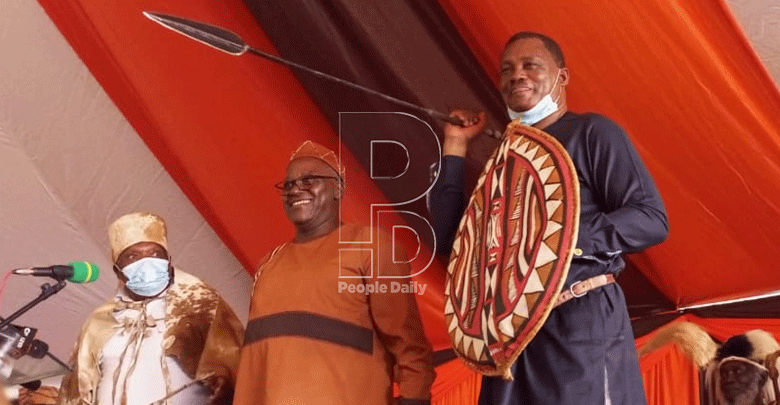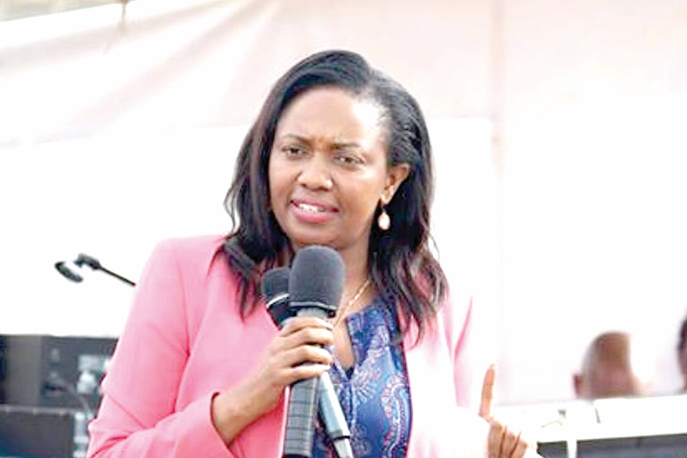Can Muturi and company derail Ruto surge from Mt Kenya?

Joseph Kimondo
The snow-capped peaks of Mt Kenya have gradually been melting from global warming without drawing much attention, but the political heat being generated by hectic competition for the presidential seat has drawn all the focus to the mountain, more than any other time during the last six multi-party elections.
Several factors are identifiable as the cause for turning the biggest voting bloc in the country into the hotspot for next year’s presidential contest and laying the stage for a competition like no other.
Since the advent of the multi-partyism in 1992, Mt Kenya has always had (a) candidate(s) in the presidential race.
Save for 1992 and 1997 when then President Moi retained his seat, the next four elections have gone to the region, with Mwai Kibaki and Uhuru Kenyatta each serving two terms.
But things have changed greatly after a perception started taking root on its own, early on during Uhuru’s final term, that Mt Kenya may not field a presidential candidate in 2022.
President Uhuru appeared to affirm this when, in January, during the funeral of Hannah Mudavadi, the mother to ANC party leader Musalia Mudavadi, he said the president should not always come from the Kikuyu and Kalenjin communities.
That appeared to open up Mt Kenya as a ‘yours for the asking’ zone, with massive six million-voter bloc, that could rise to eight million after the new registration, up for grabs.
It was Deputy President William Ruto who appeared to seize the moment and ran away with the baton into the mountain slopes, with Uhuru literary accusing his deputy of having grabbed the relay baton and dashing in the opposite direct without waiting for the whistle.
However, while Ruto seemed to enjoy an unchallenged surge on the mountain, the region’s leaders now appear to have put on their running boots to stage a fight his UDA party.
Some of the big names in the region have assembled arsenal to go for the presidency while others have been pooling campaign tools together to form a home-grown coalition that could relegate UDA from the benefits of the mountain’s symbolic windward side to the dry leeward of an outsider party.
The most spirited effort against the Ruto onslaught has been launched by National Assembly Speaker Justin Muturi who has been working hard to position himself as the local leader to go to.
Muturi started by getting himself crowned by elders as the region’s spokesperson before he announced his presidential seat bid.
He has since demonstrated political strategy by having the Democratic Party endorse him as its presidential candidate.
The party, founded by Kibaki and others, retains its clout of respect in central Kenya for having propelled him to State House in coalition with others.
Other names that have staged foray for the mountain crown include former CS Mwangi Kiunjuri, Murang’a Governor Mwangi wa Iria and former Gatanga MP Peter Kenneth.
Another axis led by Narc Kenya leader Martha Karua, Gatundu South MP Moses Kuria and other leaders is rooting for the formation of a united front.
They aim to slow down the UDA surge and give an alternative to local politicians who have been crowding into Ruto’s party where the nomination process for aspirants is predicted to spark fierce cat fights.
Kirinyaga Governor Anne Waiguru and Health CS Mutahi Kagwe are also being touted as likely contestants for the presidency.
Of the lot that have risen up to raise a standard for Mt Kenya, Muturi sounds more serious under his campaign slogan “Order, Integrity and prosperity”.
He has firmly answered those in UDA camp who think he should deputise Ruto, saying: “I am my own man, nobody starts a presidential campaign aiming for number two, I am in the race to win the top seat.”
If Muturi can sustain his drive to emerge top contender from Mt Kenya, then central Kenya will, after all, not be without a presidential contestant in 2022. — The writer is a part-time lecturer on media law and ethics who analyses political trends











